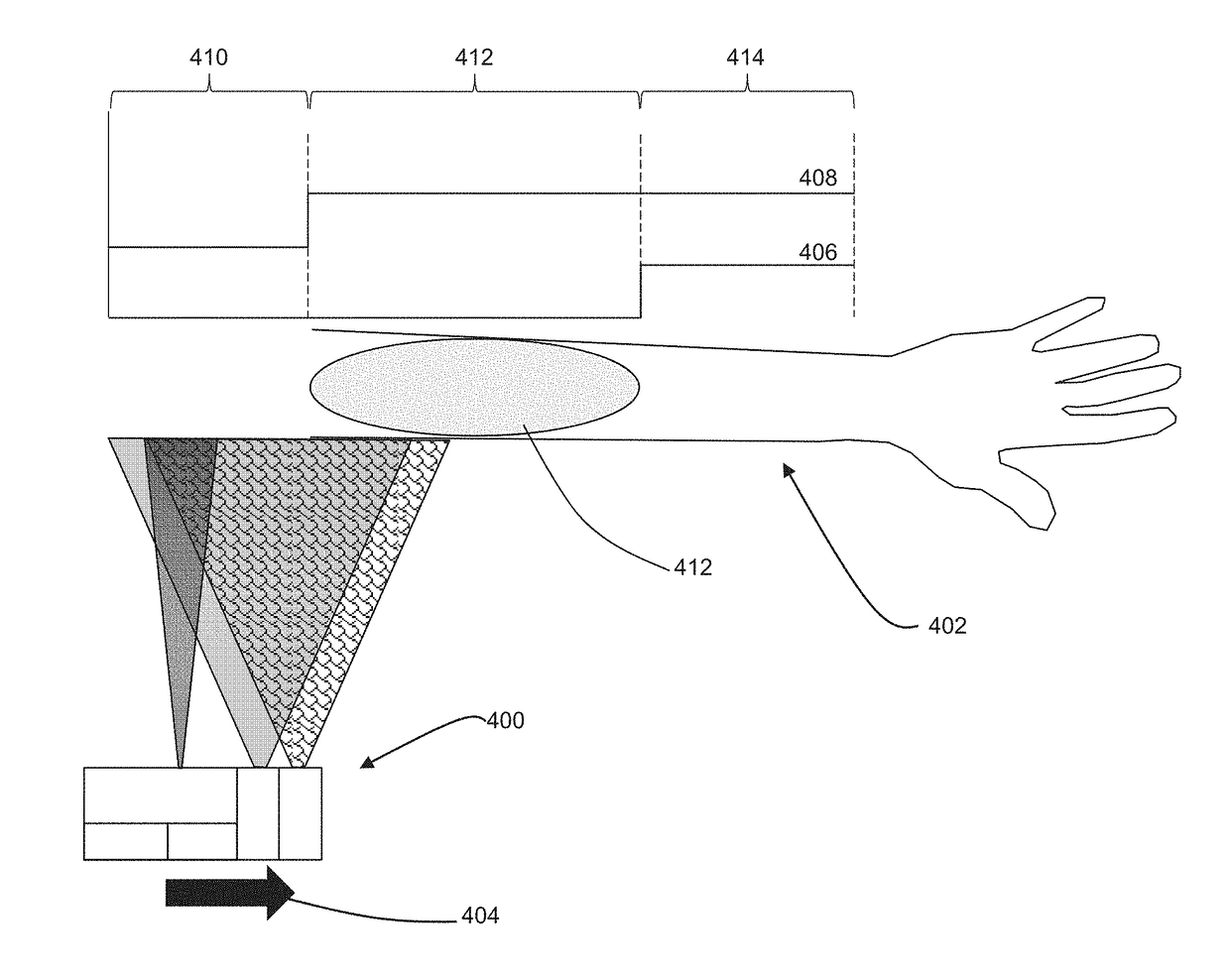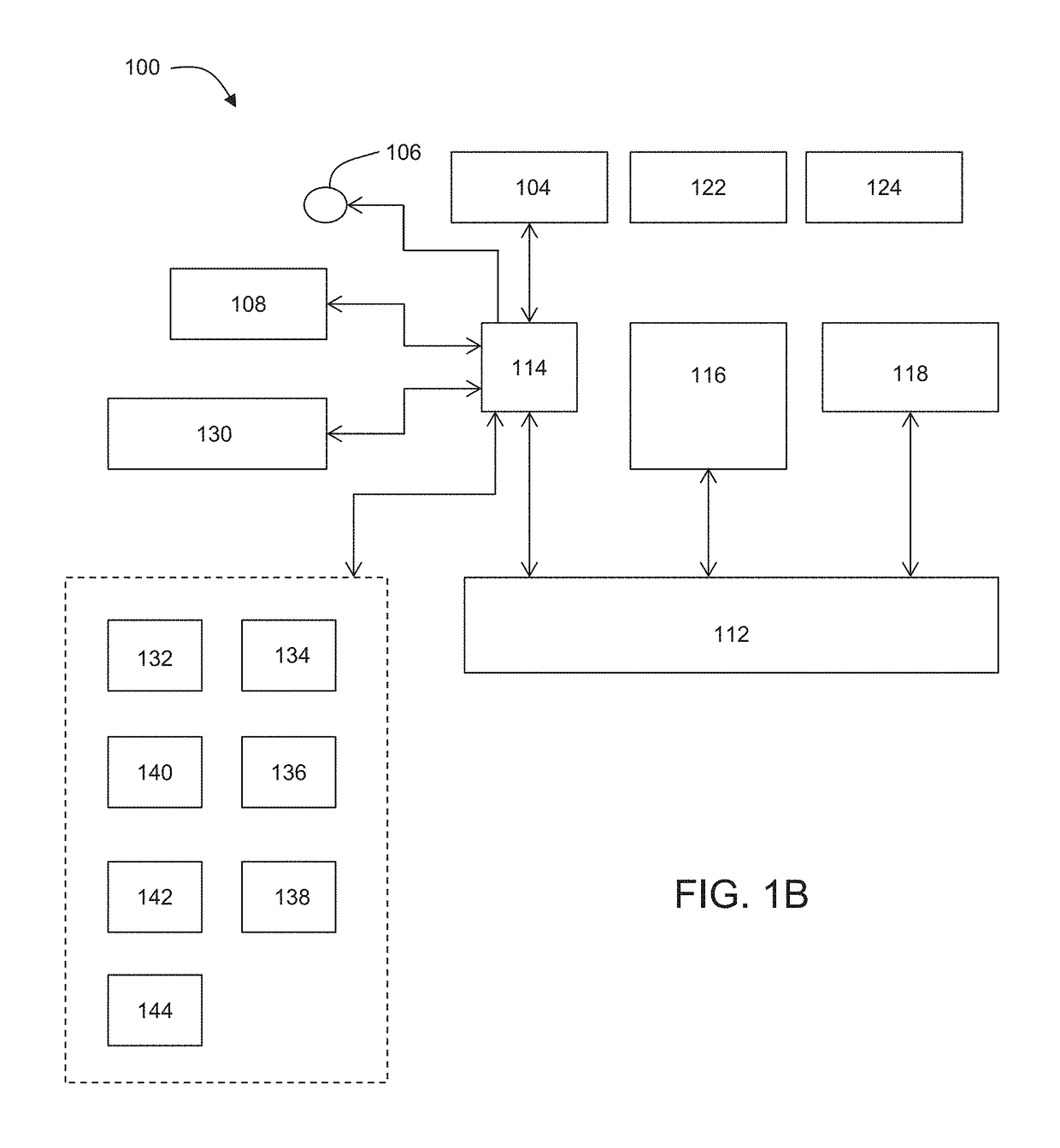Light-based shielding detection
a technology of shielding and light, applied in the field of light sensors, can solve the problems of inaccurate spf and no standard metric that indicates uva blocking efficacy, and achieve the effects of preventing skin from getting red, preventing sunburn, and enhancing skin's natural ability to resist sunburn
- Summary
- Abstract
- Description
- Claims
- Application Information
AI Technical Summary
Benefits of technology
Problems solved by technology
Method used
Image
Examples
Embodiment Construction
[0021]Described herein is a device that detects the UV light that may be reflected by a user-selected region. The UV-IR spectrometers described herein may be sunscreen detectors and incorporated in mobile and / or wearable devices. The UV-IR spectrometer may be used to scan the user's skin and based on the detected UV light values (which may be UV reflectance values), determine whether the user should apply sunscreen, and / or should apply additional sunscreen, and / or whether the scanned skin region is at risk for UV light exposure. The UV-IR spectrometer may comprise an illumination system having a UV light source, a sensor system having a UV sensor, and a controller in communication with the illumination and sensor systems. Optionally, the illumination system may also have an infrared (IR) light source, and the sensor system may have an IR sensor. The illumination and sensor systems may be located on a wearable or mobile device, while the controller may be located on a separate device...
PUM
| Property | Measurement | Unit |
|---|---|---|
| time | aaaaa | aaaaa |
| area | aaaaa | aaaaa |
| area | aaaaa | aaaaa |
Abstract
Description
Claims
Application Information
 Login to View More
Login to View More - R&D
- Intellectual Property
- Life Sciences
- Materials
- Tech Scout
- Unparalleled Data Quality
- Higher Quality Content
- 60% Fewer Hallucinations
Browse by: Latest US Patents, China's latest patents, Technical Efficacy Thesaurus, Application Domain, Technology Topic, Popular Technical Reports.
© 2025 PatSnap. All rights reserved.Legal|Privacy policy|Modern Slavery Act Transparency Statement|Sitemap|About US| Contact US: help@patsnap.com



